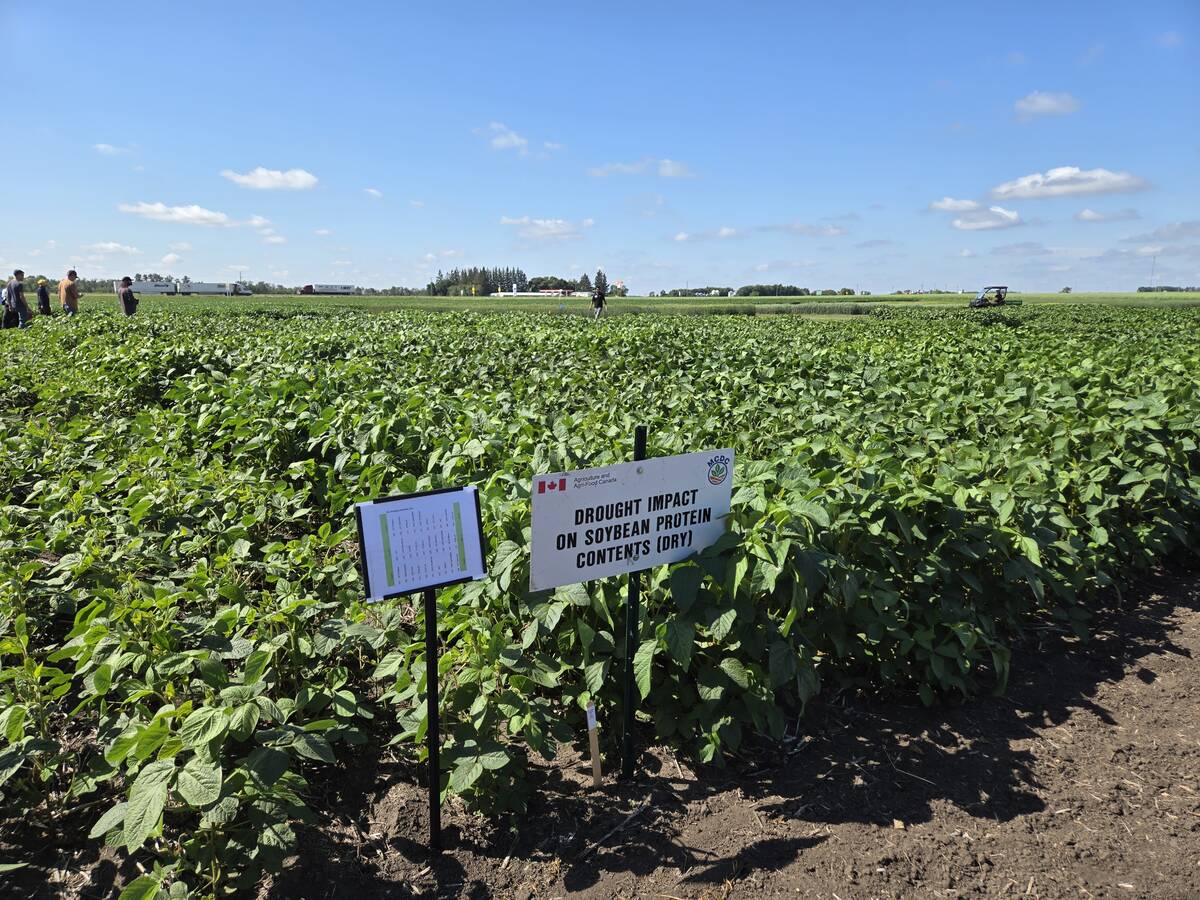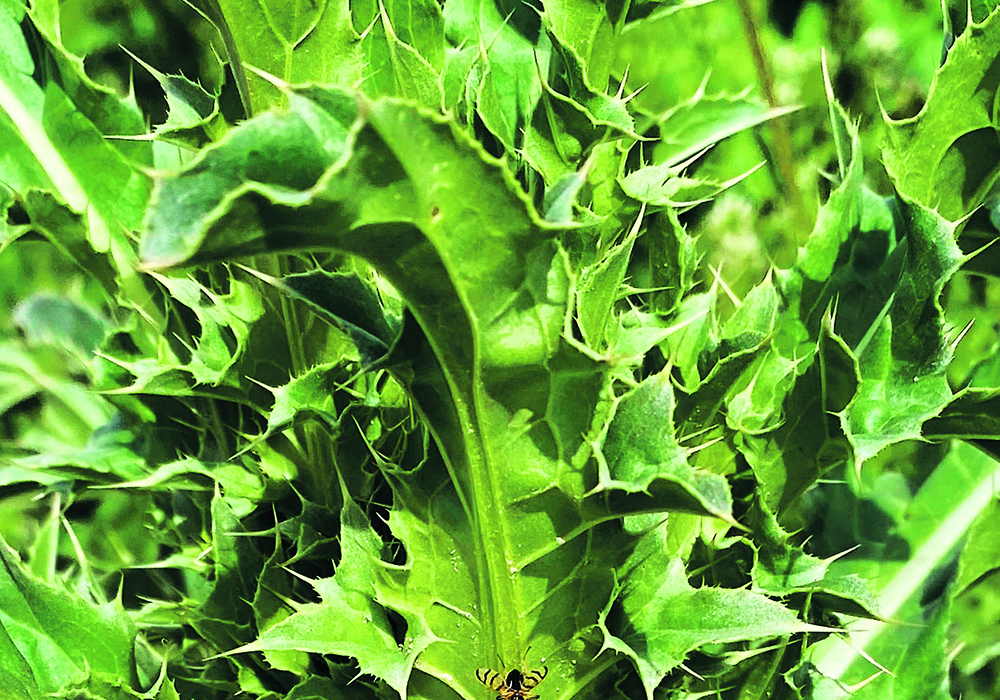Sinapis arvensis or charlock mustard, also known as wild mustard, is an aggressive weed that has kept many growers from exploring tame mustard production.
The weed can be found in most grain growing regions of the northern hemisphere and shows up as far north as the MacKenzie region of the Northwest Territories.
It’s a spring annual and, when growing in soil containing clubroot spores, can both activate the spores and become infected by the disease.
The plant can grow from 10 to 100 centimetres in height. It has branches and leaves that are hairy, unevenly toothed and end in a rounded lobe.
Read Also

Carberry field day looks for agriculture solutions
Manitoba farmers explored research solutions for resilient crops, perpetual agronomic issues and new kinds of agricultural products at a field day at the Manitoba Crop Diversification Centre in Carberry on Aug. 6.
Branches at the base often have violet spots. The stem hairs are stiff and pointed toward the ground.
Seeds begin germination at 2 to 4 C and will continue with rain and rising soil temperatures. Seeds prefer to start shallow in the soil, but can hang around for up to 10 years waiting for a chance to grow.
Seeds can survive through animal feeding, so hay from fields or pastures where the mature plant is present can end up spreading the weed with the manure.
The weed has broad, kidney shaped, cotyledon leaves. Its yellow flowers can be mistaken for other mustard family plants. The seedpods are also known as siliques.
As a podded plant, it differs from other mustards by having seeds in the flat terminal end of the seedpod. The pods narrow toward the last third of their terminal end and are held to the plant by a short, thick piece of stalk at the other end.
In canola, the upper leaves don’t have their own stalks, while the wild mustard plants have a short stalk.
The plant acts as host to a variety of disease causing organisms that can damage other brassicas such as canola. In a canola or mustard crop, wild mustard is highly undesirable. If allowed to contaminate the cropped seed, it can reach levels where the canola will be graded sample, resulting in big financial losses.
The tolerance for the weed is about 20 plants per sq. metre in a canola crop before the plant will generate five percent of the seed harvested and a sample grade.
In cereals, 10 plants in 0.1 metre, or a sq. foot, can result in a 10 to 20 bushel per acre yield loss. For flax growers, 10 in a sq. metre can cut yields up to 50 percent, with 33 plants in that same space reducing yields by 65 percent in a pea crop.
Herbicide tolerant canola varieties and hybrids have helped reduce the weed’s presence in those fields.
The plants have little or no resistance to tillage. However, tillage can also disturb ungerminated seeds creating other issues related to moisture loss, erosion and increased production costs.
The good news is that herbicides are available to control the weed both in a pre-seed burn off and in-crop situations. The only control challenges are in other non-herbicide resistant brassica crops and when the weed stage is well advanced.
Some wild mustard has developed tolerance to Group 2, ALS inhibitor herbicides, including ethametsulfuron-methyl, imazethapyr, thifensulfuron-methyl and tribenuronmethyl.
Multiple herbicide approaches, crop rotation and limiting seed production are the most effective control methods.
The brassica is effective at using both moisture and nutrients early in the season, robbing a desired crop of inputs and water, so early control is critical.














